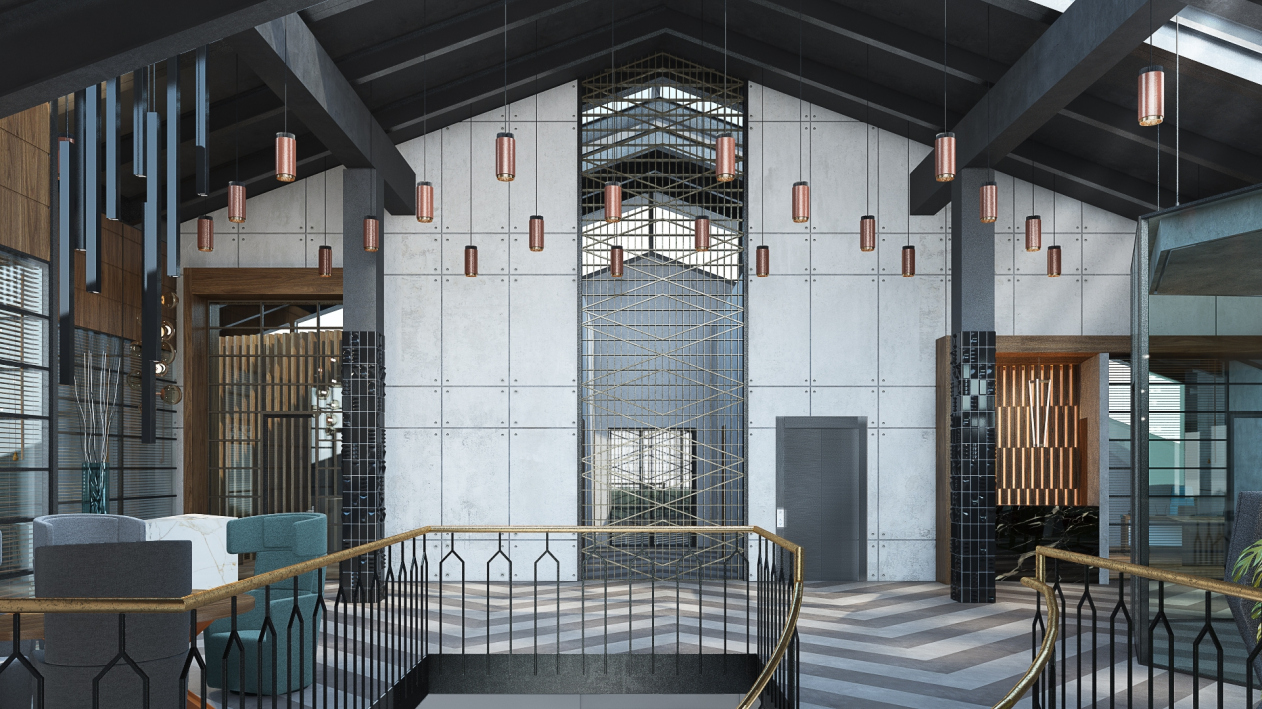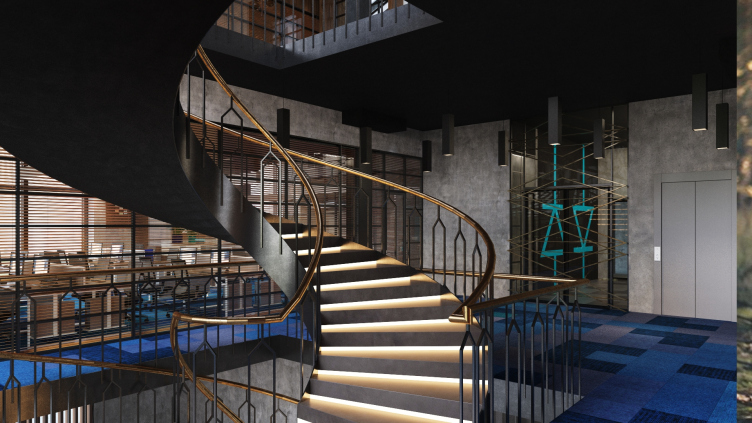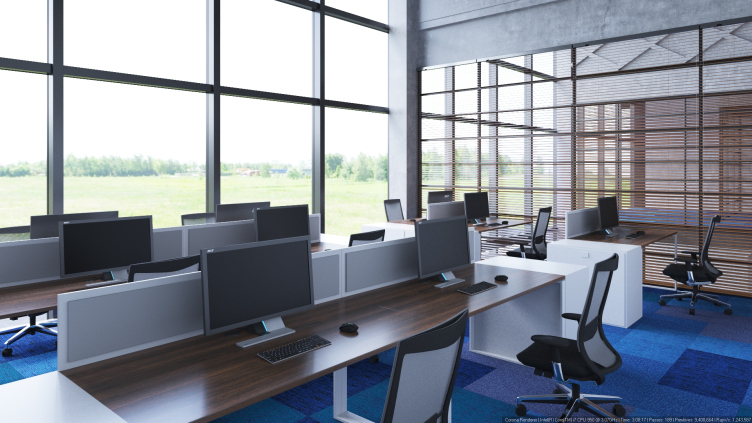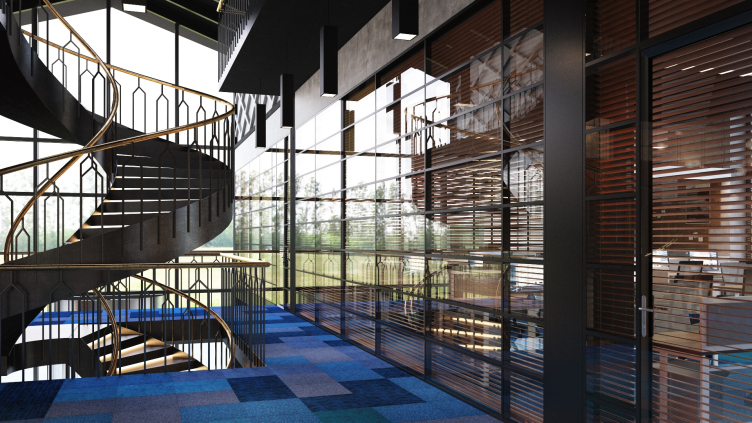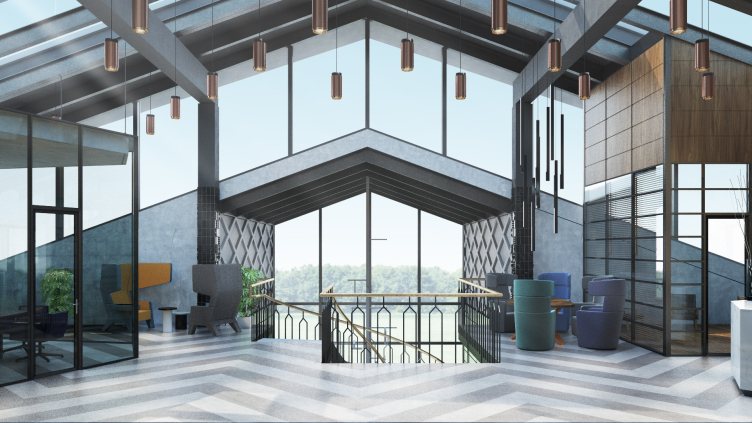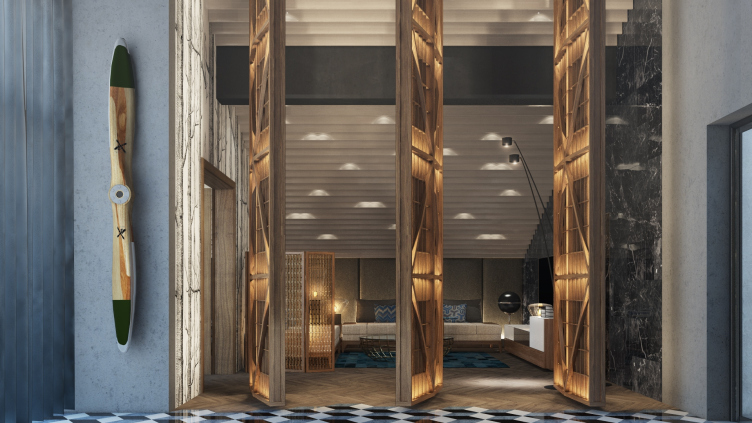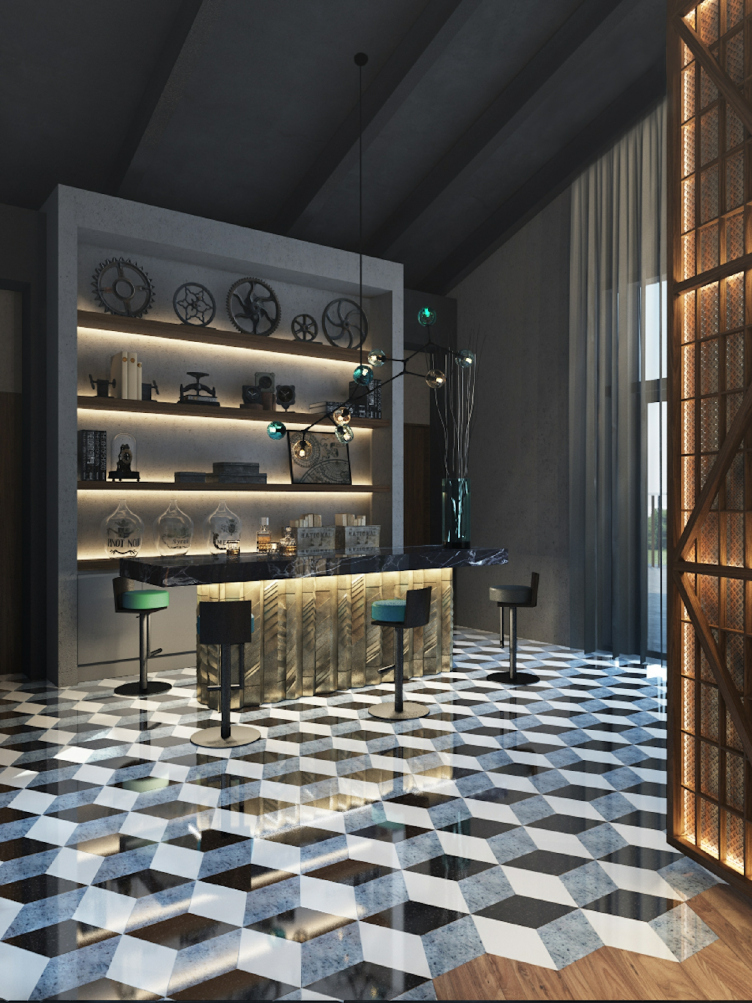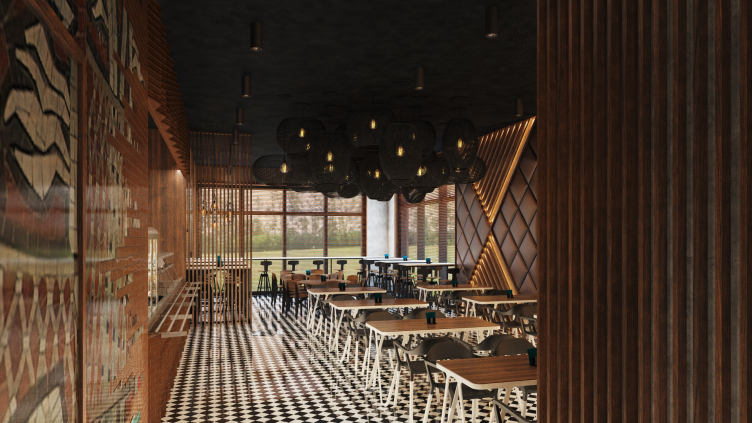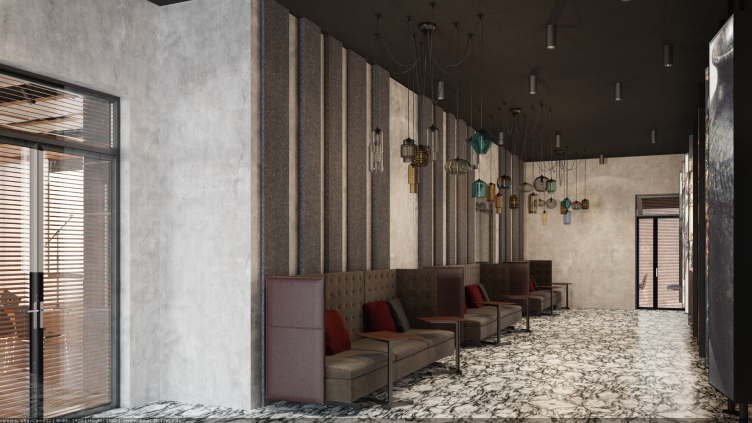AEDON - one of Russia's leading companies in the area of electronic engineering - is based in the city of Voronezh that has retained the fame of the all-Russia radionics center ever since the soviet days. The company supports educational and research programs in the city and in its region. Besides, recently the company has started the construction of its own research and development cluster in a pine-tree forest just outside Voronezh. The complex will include production facilities, laboratories, offices, educational institutions, residential buildings, and social infrastructure; at the same time, it is planned that its construction will be carried out in phases. Currently, the implementation of the first phase has started - the construction of the office and production center of AEDON.
Led by Arseniy Leonovich, the architectural bureau PANACOM is doing the interior design for this already-in-construction building. Its inside space is divided into several distinct parts: the first level includes the open space area for meetings and conferences, the second floor is occupied by offices and laboratories, and the third floor will include the top management offices. Hierarchically subjugated, the levels are strung upon the communication vertical of the open spiral staircase where the backlit stairs enhance the "spinning" effect, highlighting the homogeneity of the vertical axis. Besides the stairway that connects the inside spaces literally, there is also the image-wise and emotional connection - the sections will be united by a single set of the decoration materials of the same colors. This democratic solution where the luxury of decoration is concentrated not in the top management offices but is evenly spread over the public, working, and representative areas, does not rule out, however, a certain variability of the color combinations that in turn provide for the variety of the visitors' impressions.
Interiors of the headquarter of the Voronezh research and production company © PANACOM
Interiors of the headquarter of the Voronezh research and production company © PANACOM
Interiors of the headquarter of the Voronezh research and production company © PANACOM
Arseniy Leonovich describes the resulting space as a "corporate/club" type where, "on the one hand, the spirit of business-like interior and concentrated work must be present, and, on the other hand, the almost homely feeling of comfort is to be experienced. If we are to walk through the building from the first to the second to the third floor, we will get a single impression from the interior: completely public, and, at the same time, utterly private". The space is divided into sections by glass partitions. Inside of them, these partitions have wooden blinds that allow one to adjust the degree of transparency and privacy. Besides, thanks to the high degree of penetration of the ambient light (the sun tubes on the roof and the panoramic glazing) the people who will work in this industrial environment will still feel a connection to nature, the landscape, changing of the time of the day, and the changing of the seasons.
Interiors of the headquarter of the Voronezh research and production company © PANACOM
Interiors of the headquarter of the Voronezh research and production company © PANACOM
The interior design displays the company's corporate identity, the recent rebranding also having been done by PANACOM. The company's logo - a geometric system of differently-sized pixel squares - reflects the interaction of the microchips as the concept of mutual penetration of intellectual media. This style is to be read everywhere in the form of ornaments and pristine geometry, starting with the large volumes of the meeting rooms and ending with the ceiling lamps executed in the same pixel shapes. The interior is dominated by the corporate-style navy blue and pitch black tones that go together with other decoration materials - the "brutal" concrete or micro cement and the "tender" wood and textile. According to Arseniy Leonovich, such abundance of black colored details gives the interior "the masculinity of James Bond, the austerity of a loft, and the systematic air of a scientific laboratory".
Interiors of the headquarter of the Voronezh research and production company © PANACOM
Interiors of the headquarter of the Voronezh research and production company © PANACOM
Interiors of the headquarter of the Voronezh research and production company © PANACOM
Interiors of the headquarter of the Voronezh research and production company © PANACOM
